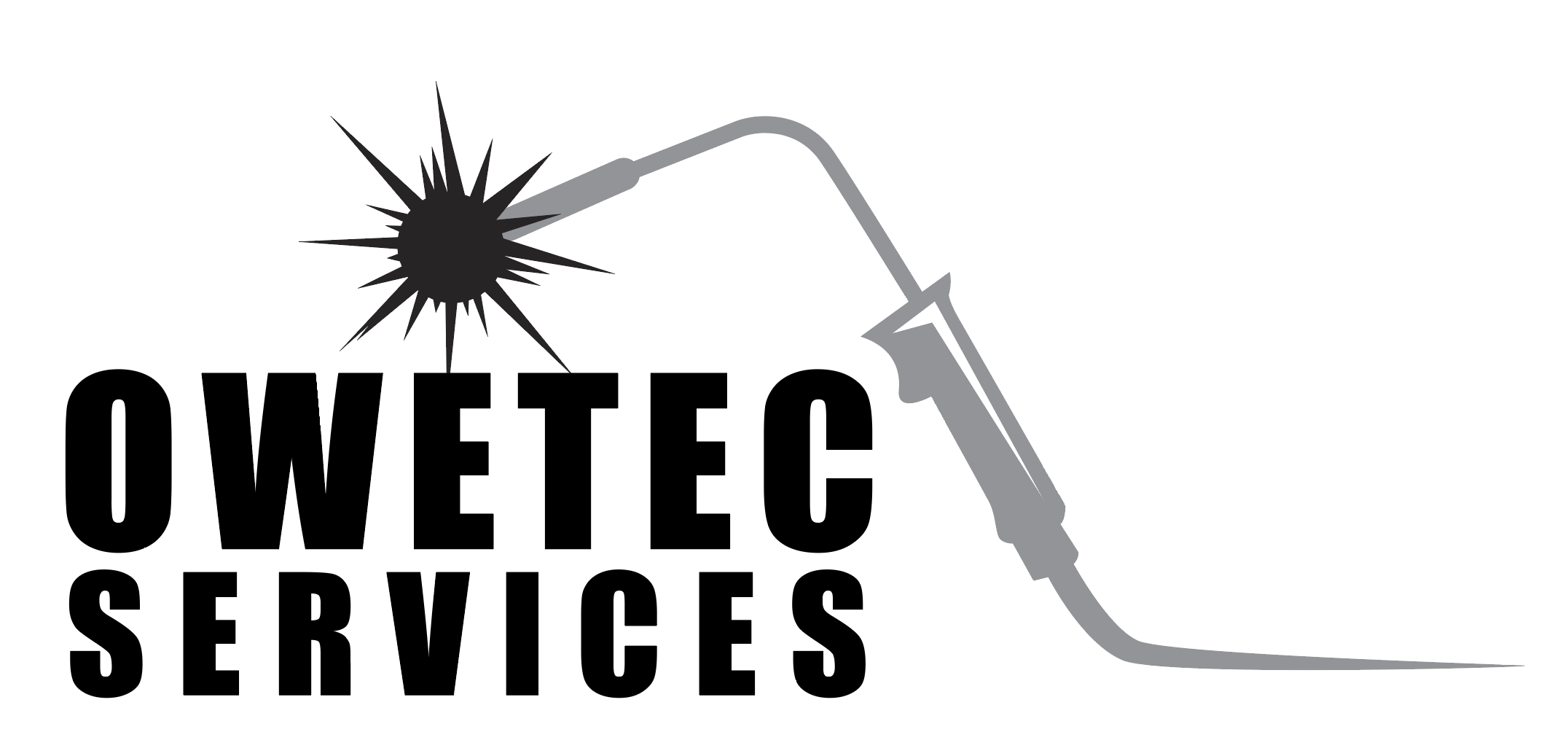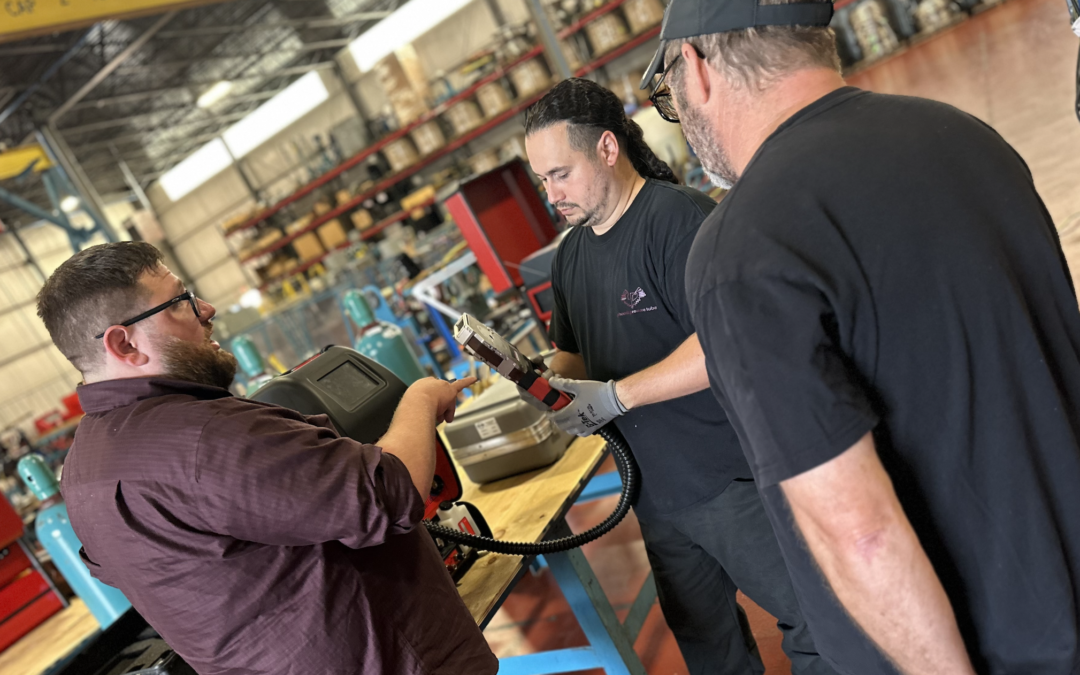Proper weld training and education are critical for multiple reasons, including safety, quality, efficiency, compliance, and career development. Here’s why:
1. Safety
Welding involves high temperatures, electricity, and potentially hazardous fumes. Proper training ensures welders understand and follow safety protocols to prevent accidents, burns, electrical hazards, or exposure to toxic substances.
2. Quality and Structural Integrity
Well-educated welders produce strong, reliable welds that meet or exceed industry standards, reducing the risk of structural failures in critical applications like buildings, bridges, pipelines, and aerospace components.
3. Efficiency and Cost Savings
Skilled welders complete jobs faster and with less material waste, reducing production costs and increasing overall productivity across industries such as construction, shipbuilding, automotive, and manufacturing.
4. Compliance with Standards
Industries require welders to follow strict codes and certifications (e.g., AWS, ASME, ISO). Training ensures compliance with these regulations, minimizing legal and liability risks.
5. Career Advancement
Formal training and certification open up higher-paying job opportunities and enable welders to work in specialized sectors. Proficiency in techniques like MIG, TIG, Stick, and Flux-Cored welding makes welders more versatile and valuable.
6. Adaptability to Innovation and Technology
As welding technology evolves—including robotics, automation, and new materials—educated welders can adapt quickly, remain competitive, and support innovation in their industries.
Key Variables in Orbital Welding (Autogenous and Wire-Fed)
In high-precision applications such as semiconductor, pharmaceutical, and aerospace piping, orbital welding demands strict control over several variables. Below is an overview of the most critical factors:
- Weld Current (Amperage)
- Controls heat input.
- Too high: burn-through, oxidation.
- Too low: poor fusion, lack of penetration.
- Travel Speed / Weld Time
- Affects penetration and bead shape.
- Too fast: incomplete fusion.
- Too slow: overheating, excessive width.
- Tungsten Electrode Positioning
- Arc alignment is key.
- Improper positioning: arc instability, inconsistent bead.
- Shielding Gas Flow and Purity
- Typically ultra-high purity argon (99.999%).
- Flow rate: ~15–20 CFH.
- Internal purge is critical in high-purity tube systems.
- Tube/Pipe Fit-Up and Alignment
- Poor fit leads to inconsistent arc length and penetration.
- Precision alignment ensures repeatable, high-quality welds.
- Weld Head Rotation Speed
- Affects heat distribution.
- Too fast: poor fusion.
- Too slow: overheating, oversized welds.
- Weld Schedule / Program
- Pre-set parameters tailored to material and joint.
- Includes:
- Pre-flow, arc start, peak and background current
- Pulse settings, downslope, crater fill, post-flow
- Travel speed, rotation speed, and ramping levels
- Material Type and Thickness
- Common materials: Stainless Steel, Titanium, Inconel, Monel, Duplex/Super Duplex.
- Thicker walls may require multi-pass welding and ramped parameters.
- Cleanliness of Materials
- Clean surfaces prevent defects like porosity, oxidation, and lack of fusion.
- Critical for corrosion resistance and performance in high-purity systems.
Additional Variables in Orbital Welding with Wire Feed
Wire-fed orbital TIG introduces further complexity:
- Wire Feed Speed
- Affects filler deposition.
- Must be coordinated with current and rotation speed.
- Wire Type and Diameter
- Must match the base material and desired weld profile.
- Typical diameters: 0.035” (0.9 mm), 0.045” (1.2 mm).
- Wire Stick-Out / Positioning
- Affects arc stability and deposition accuracy.
- Travel Speed / Rotation Speed
- Must match wire feed for consistent penetration and bead profile.
- Weld Current & Voltage
- Higher current often needed vs. autogenous.
- Pulsed current may be used for heat control.
- Arc Gap / Arc Length
- Maintained by the control system.
- Affects bead shape, stability, and penetration.
- Shielding Gas Setup
- Outer shielding and internal purge may require higher flow for wire-fed welds.
- Weld Schedule / Programming
- Multi-zone schedules are standard.
- Hot pass, fill, and cap passes may be used for thick-wall applications.
- AVC (Arc Voltage Control) / Oscillation (Weaving)
- AVC maintains a consistent arc length by adjusting torch height in real time.
- Oscillation improves sidewall fusion, heat distribution, and filler distribution.
The Role of AVC and Oscillation
AVC (Arc Voltage Control) automatically maintains arc length, critical in wire-fed TIG welding to:
- Ensure consistent penetration
- Compensate for irregular surfaces
- Reduce spatter and defects
Oscillation (Weaving) provides:
- Better sidewall tie-in
- Wider, uniform weld beads
- Controlled heat input
- Even filler distribution in multi-pass welds
Key parameters include:
- Oscillation width and speed
- Edge dwell time
- Center pause (optional)
Final Prep Considerations
- Clean base materials thoroughly
- Ensure precise joint fit-up and bevel prep (especially for thick-wall joints)
- Use high-purity shielding and purge gases
- Apply industry-specific welding procedures and standards
At Owetec Services, we go beyond basic demonstrations or eight-hour overviews. We deliver in-depth, hands-on training that prepares both new welders and experienced professionals for the rapidly evolving welding industry.
We’ve trained individuals working with top organizations providing advanced instruction in:
- Orbital fusion welding
- Orbital wire-fed TIG
- Robotic and manual welding techniques
Whether you’re just starting out or looking to specialize further, our programs offer comprehensive insights into high-spec welding practices and technologies.
Reach out today if you’re ready to go beyond the basics and master the skills needed to thrive in today’s competitive and advanced welding industry.

